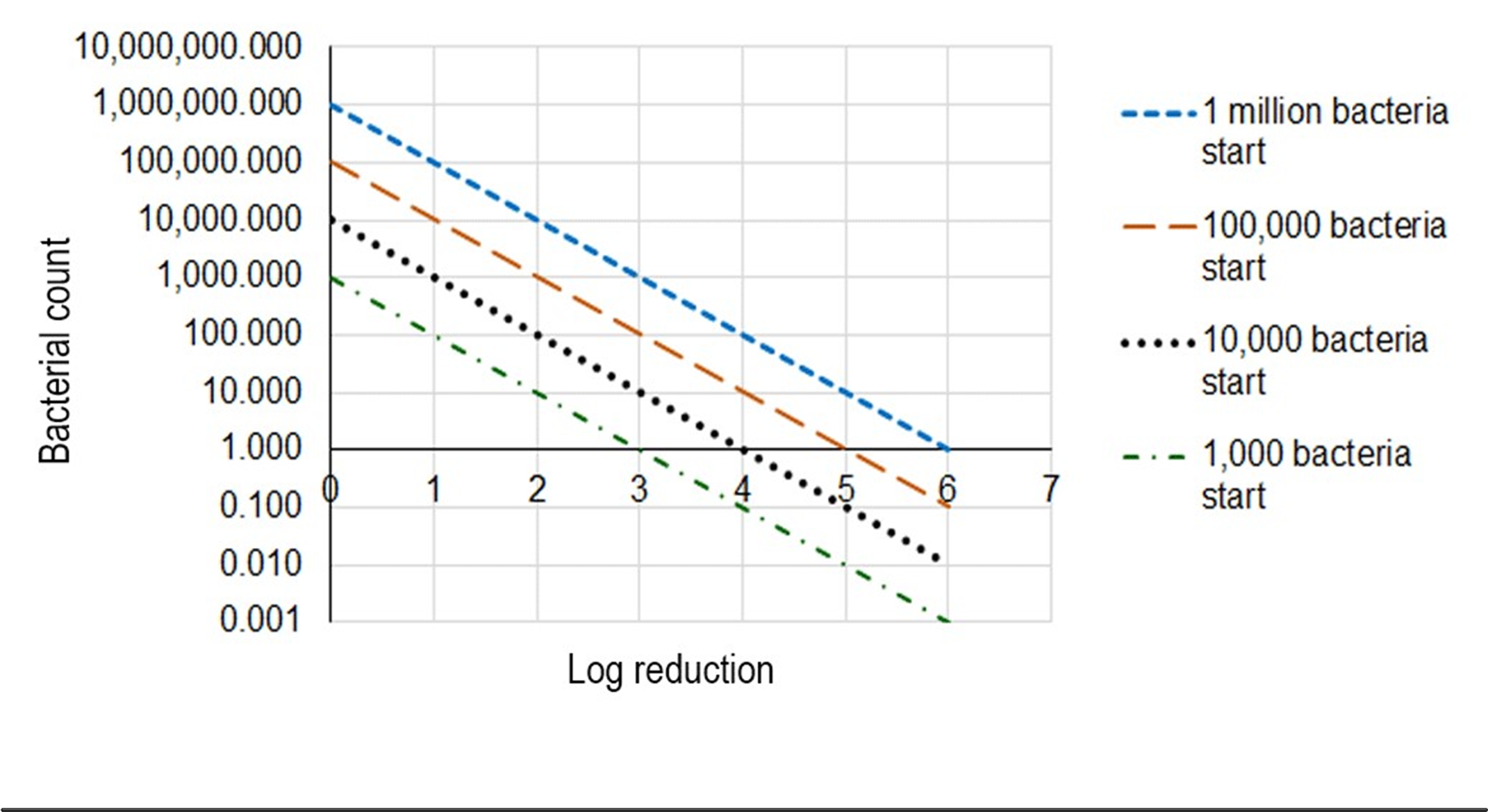Annex 2 - logarithmic reduction
An overview of logarithmic reduction in bacterial count.
For the purpose of this guidance, logarithmic (log) reduction is a way of identifying the decrease in the number of bacteria (bacterial count) following a method of processing- for example, cooking.
A one-log reduction means that the number of bacteria (bacterial count) has been reduced by 90%. If the meat originally has 1,000 bacteria before cooking, after a one-log-reduction cooking method, the meat will still have 100 bacteria left. A two-log-reduction cooking method would decrease bacterial count by 99%, that is, 10 bacteria left. In contrast, a six-log-reduction cooking method would decrease the bacterial count by 99.9999%, that is, the meat would have between one and zero bacteria.
Log reduction is a mathematical concept. Therefore, the bacterial count will never be described as an ‘absolute zero,’ but as a decimal instead. The smaller the decimal, the less likely it will be for the meat to have any bacteria left after cooking.
If the bacterial count of the meat used is very high (for example, one million), a four-log reduction would decrease the bacterial count to 100, whereas a six-log reduction would decrease the bacterial count to one; not all bacteria would be eliminated. This illustrates the importance of all controls through the food chain, including at supplier level as detailed in Annex 3.
‘Figure 2’ illustrates the effect of log reduction in bacterial count as explained in previous paragraphs.
Figure 2. Effect of log reduction in bacterial count
